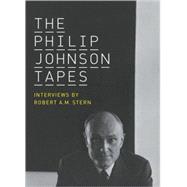
What is included with this book?
Robert A. M. Stern is the founding partner of Robert A. M. Stern Architects and dean of the Yale School of Architecture. He is the author of the monumental five-volume history of New York's architecture and urban development, concluding with New York 2000. The author lives in New York.
| Encounters with Philip Johnson: A Partial Memoir | p. 8 |
| Upbringing | p. 16 |
| MoMA and the International Style | p. 37 |
| The Right | p. 62 |
| Architecture School and Military Service | p. 76 |
| Philip Johnson, Architect | p. 102 |
| MoMA and the Practice in the 1950s | p. 116 |
| Seagram | p. 136 |
| Lincoln Center | p. 151 |
| The Institutional Commissions | p. 165 |
| Patronage, Competition, and the New Generation | p. 182 |
| Afterword: Johnson's Rolodex | p. 191 |
| Index | p. 196 |
| Illustration Credits | p. 206 |
| Table of Contents provided by Blackwell. All Rights Reserved. |
The New copy of this book will include any supplemental materials advertised. Please check the title of the book to determine if it should include any access cards, study guides, lab manuals, CDs, etc.
The Used, Rental and eBook copies of this book are not guaranteed to include any supplemental materials. Typically, only the book itself is included. This is true even if the title states it includes any access cards, study guides, lab manuals, CDs, etc.
Excerpted from The Philip Johnson Tapes: Interviews by Robert A. M. Stern by Robert A. M. Stern
All rights reserved by the original copyright owners. Excerpts are provided for display purposes only and may not be reproduced, reprinted or distributed without the written permission of the publisher.